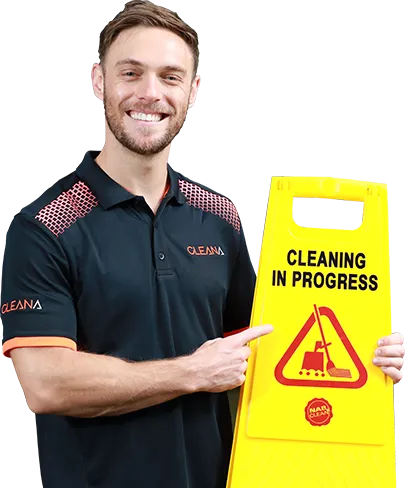Hospital cleaning is unlike any other type of commercial cleaning. The major focus of a hospital cleaning project should be on infection control. While, as a hospital owner or manager in Sydney, you may already be aware of the importance of a clean hospital environment for the safety of your patients and hospital staff by controlling infection, maintaining a clean and germ-free hospital environment is anything but easy, and depends on a number of factors, which we are going to talk about today.
It is a common problem with many hospitals in Sydney to not have their environments adequately clean even after having a hospital cleaning routine in place.
Many hospitals, even after getting their premises professionally cleaned daily, were found to have pathogens and other bacteria all over their common places & surfaces. If you are also facing the same issue and wondering how you can improve cleaning & hygiene conditions in your medical centre, please continue reading.
What Is Really Important in Hospital Cleaning
Unlike any other commercial cleaning, hospital cleaning is far beyond routine sweeping and vacuuming or mopping. The primary focus of a hospital cleaning service should be on achieving high levels of safety and hygiene for the medical facility environment.
The key is to adopt high-standard hospital cleaning practices that focus on reducing Hospital Acquired Infections (HAI), which refer to infections that a person can catch through a contaminated hospital environment.
So, in case you are wondering what really matters when cleaning a hospital facility, it is to reduce infections and infection-borne diseases through adequate & routine cleaning of the entire facility with a special focus on frequent disinfection of high-touch points and surfaces.
Disinfection is a process that involves the use of specialised products called disinfectants to reduce or kill germs from high-touch surfaces in a place.
Germs can easily move around and transfer to people & surfaces through common touch points such as door knobs, handles, switches, chair handles, phones, etc., which can be a major contributor to spreading infections in healthcare facilities. Routine disinfection of touchpoints will prevent infections from spreading within your premises.
Most Important Things to Consider When Cleaning a Hospital Facility
Having a professional medical cleaning team in place with the most appropriate cleaning plan & checklist is the best thing you can do to ensure a healthy environment for your hospital staff & patients. Here are some other things to keep in mind while performing a hospital cleaning service in Sydney.
Clean the Entire Place at Least Once Every Day
To start with, you must make sure that the entire hospital facility is cleaned deeply at least once every day. This will include sweeping & mopping the floors and cleaning all other areas within the building. A TGA-approved disinfectant must be used for mopping/wiping floors and hard surfaces.
Medical cleaners must be proficient with the use of certain cleaning equipment and products to ensure efficient & safe cleaning. For example, the use of natural and eco-friendly cleaning supplies can help maintain a fresh and safe environment in the hospital.
At CLEANA, we use colour-coded tools, baskets, mops, mugs, microfibre cloths, etc. for cleaning different areas in a hospital, depending on risk levels and to avoid cross-contamination.
Daily hospital cleaning should cover cleaning all rooms, offices, and common areas. This will help maintain an attractive facility and reduce germs on surfaces.
Sanitise High-Traffic Areas & Touchpoints Multiple Times a Day
Hospitals are responsible not only for hospital-acquired infections, i.e. the diseases that healthy people can catch in an infected medical environment but also they can contribute to turning a simple disease into a massive outbreak by making it so easy for infections to spread. This is why hospitals must be sanitised multiple times a day.
Sanitising all sensitive places in your hospital and disinfecting high-touch points like your reception areas, toilets, desks, furniture, public phones, light switches, water dispensers & taps, staircase railing, etc.
Will help reduce germs and minimise the spread of infections in your premises. These sensitive surfaces can become hot spots for germs in no time and will eventually start spreading infections as many people touch them again and again over the day.
Sanitising these points to reduce germs will also help decrease the probability of your patients and staff catching a hospital-acquired infection.
Ideally, you should be sanitising all high-traffic places and touch points across your property multiple times a day, depending on foot traffic and the crowd in the place.
The best way to go about this is to instruct your hospital cleaning team to get these points sanitised on the auto mode by following a pre-decided sanitization routine. Make sure that all points across all areas within the building are thoroughly covered and that not a single spot is missed.
Cleaning Toilets Is Equally Important
Do you know what’s one of the biggest hot spots for germs in a medical facility? It’s the toilets. On average, a toilet seat contains about 50 bacteria per square inch. Even more so in a public/shared toilet in a medical facility.
All kinds of people are going to use the toilets, including patients, your staff, and other visitors (healthy people). To avoid contamination and the further spread of diseases and infections, you must get your hospital toilets thoroughly cleaned and disinfected multiple times every day.
Everything in a toilet or restroom, including toilet seats, urinals, pots, washbasins or sinks, soap dispensers, paper roll holders, mirrors, water taps, floors, doors, light switches, cabinets, and even the walls and tiles must be cleaned deeply at least once every day, and all touchpoints, i.e. places & surfaces that are touched by multiple people, such as door knobs should be disinfected multiple times a day.
Bacteria in hospital toilets will not stay there, and will eventually spread to other places in your facility. You must strive to maintain a fresh and germ-free environment in your facility by keeping your toilets clean and odour-free at all times.
Pay Attention to Other High-Traffic Areas as Well
Other high-traffic areas in the hospital, including waiting rooms, examination rooms, patient rooms, etc. must also be paid close attention to when performing medical cleaning services.
The reception and waiting room, for instance, are the first point of interaction for a new patient or visitor coming to the hospital. You should make sure that the area is both safe and clean for everyone and minimise the possibility of cross-contamination through routine cleaning and sanitisation (multiple times a day if needed).
The hospital waiting room can become crowded quickly on a busy day, especially if it’s a small space. In that case, you need to get all touchpoints cleaned multiple times a day and keep the air quality fresh to reduce the chances of air-borne infections. You should also try to get the place less crowded to prevent the spread of diseases.
The examination room is where patients interact with doctors. For the safety of both parties, examination rooms must be cleaned daily and all high-touch points, including chairs, desks, tables, cabinets, door knobs, light switches, etc.
Should be disinfected every few hours. Dedicated trash cans must be kept in every examination room, and all trash cans should be emptied and cleaned and liners replaced at least twice every day.
Make sure that all disposables, including surgical items, are disposed of after every use. Professional medical cleaners at CLEANA know how to properly and safely get rid of medical waste to avoid contamination.
A Tailored Cleaning Approach Is the Way to Go
Stay away from cleaning companies that offer a one-size-fits-all solution for your medical cleaning needs. It’s not the best way to ensure maximum quality cleaning results that meet both your expectations and goals.
Some cleaners will go on cleaning every commercial property they come across using the same set of equipment and the same fixed approach without ever bothering to consider the specific requirements & goals of the property or property owner.
Do not let this happen with your commercial building. This will definitely not work in a medical facility, because every area in your hospital might need a different kind of cleaning, which you can figure out only by having a detailed analysis of your place first.
A professional medical cleaning company like CLEANA will offer a customised cleaning service with a free quote for every project. Our cleaning solution will be tailored to meet your particular hospital cleaning needs and expectations based on our inspection of your place.
We bring the best range of supplies and equipment for high-quality medical centre cleaning with a focus on safety and hygiene. Contact us to know our complete process.
Hire Professional Medical Services for Your Hospital in Sydney
Trusting a regular cleaner or janitor to understand and be able to perform intense medical cleaning procedures, such as disinfection, sanitisation and waste removal, might not be a wise decision.
Your medical cleaners need to have some experience in the industry along with the knowledge, skills and resources to handle a cleaning project of such scale and intensity, where the hygiene of the place and a healthy environment matter the most.
Hiring professional & experienced commercial cleaners for your medical facility cleaning is almost always the best idea, which can save you both time and money in the long run as well as from the embarrassment of not having your hospital clean & well-maintained.

